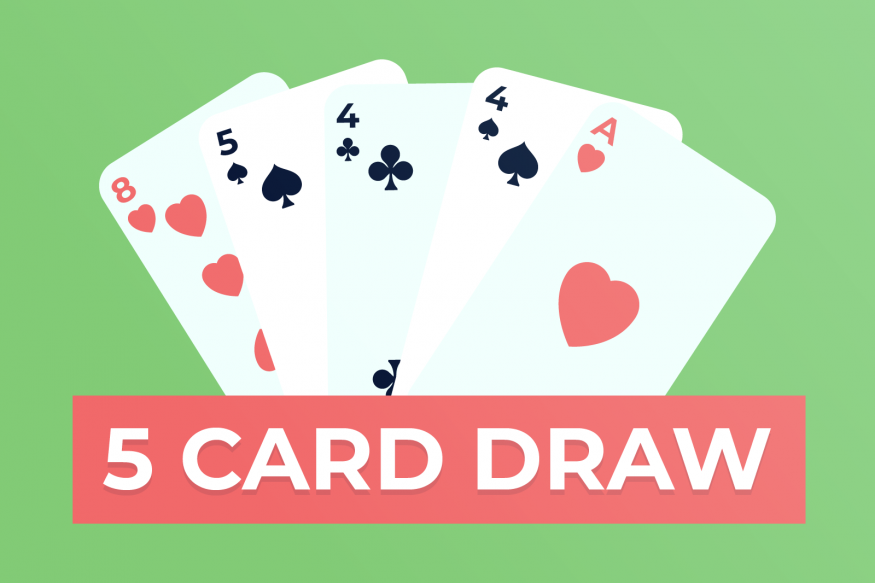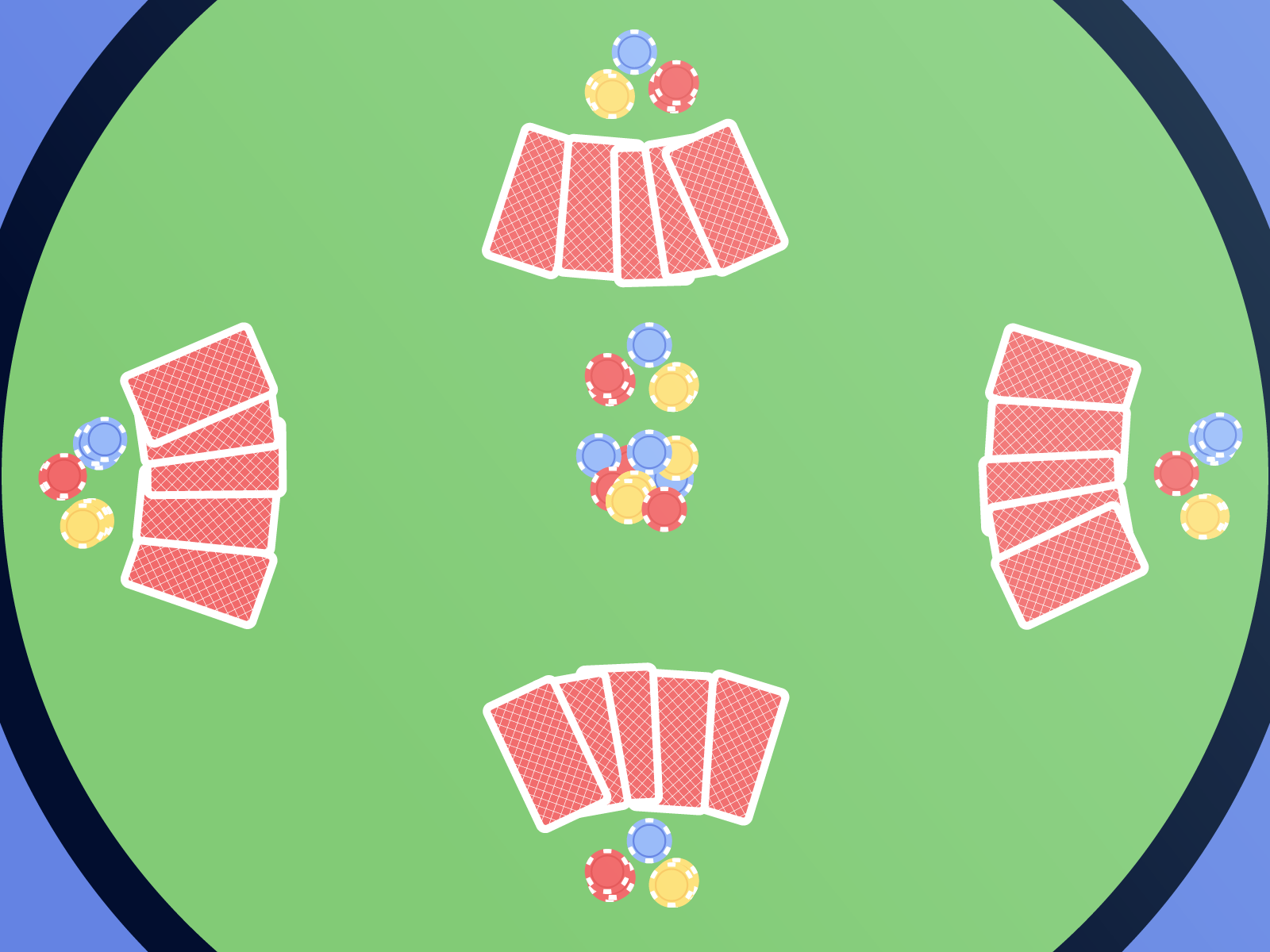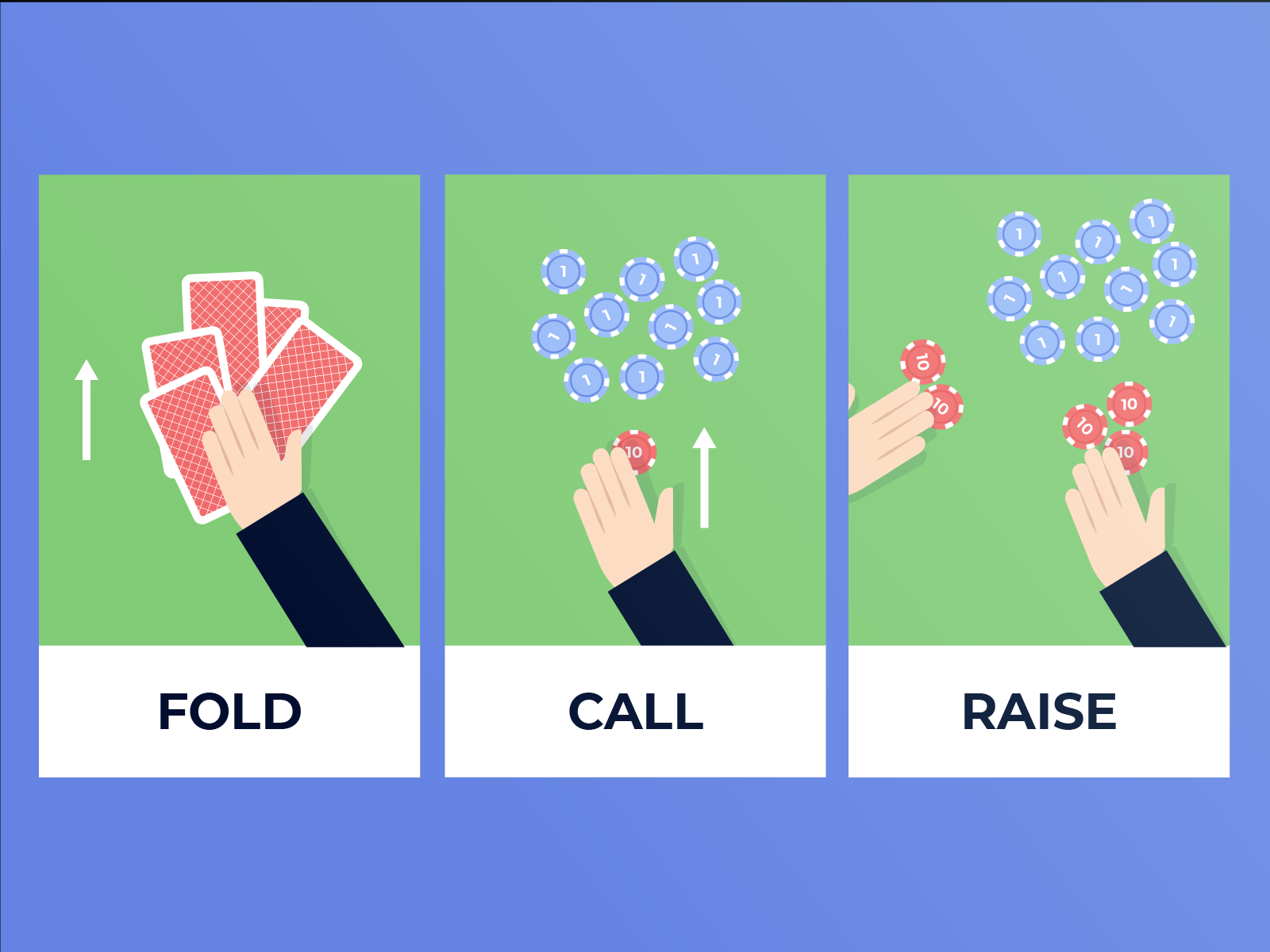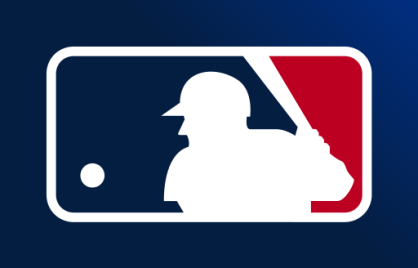How To Play 5 Card Draw Poker

5 Card Draw Poker: What You Need to Know
- Playing Order: In 5 Card Draw Poker, players operate in a clockwise direction, starting from the dealer’s left. The first two players left of the dealer generally post the small and big blinds.
- Dealing the Cards: Each player is dealt five private cards face down. The goal is to make the best five-card hand according to standard poker hand rankings.
- Betting Rounds: After the deal, there’s a round of betting starting with the player left of the big blind. After the betting, players can opt to discard up to three cards and receive new ones.
- Final Betting Round: There is a final round of betting after the draw, followed by a showdown, where the player with the best hand wins the pot.
- Differences from Texas Hold’em: In contrast to Texas Hold’em, 5 Card Draw allows no community cards and gives players the chance to improve their hand by replacing cards during the draw round.
5 Card Poker is nowhere near as popular as it used to be a few decades ago.
Still, you may get a chance to play it in a home game and there are still some poker sites offering 5 Card Draw games. So let’s take a look at what 5 Card Draw is, how to play, the rules, and the best strategies for winning.
What Is 5 Card Draw?
5 Card Draw is a simple variation of poker, where all players are dealt five cards at the start. The game is played using a standard deck of 52 cards and uses the same hand rankings as in Texas Hold’em.
How To Play 5 Card Draw Poker
As far as the gameplay is concerned, 5 Card Draw is one of the easiest poker variations to learn. You’ll need a deck of cards and some chips or something to track the betting, and you’re good to go.
Because of the way the cards are dealt, having more than 6 players at the table is not ideal, although it is possible. The game is usually played in a five or six-handed format.
Each round begins with players posting blinds, just like in Texas Hold’em. Blinds are posted by the players seated to the immediate left of the dealer position.
Antes aren’t mandatory, but they’re more common in 5 Card Draw than in Hold’em.
Once blinds are posted, and cards are shuffled, the deal begins with the first card off the deck going to the player in the small blind position and going around the table clockwise.
Players are dealt one card at a time, face down until everyone has five cards in their hand. Once the dealing is done, the play can begin.

5 Card Draw Rules
Most players are accustomed to community card poker games like Hold’em and Omaha.
However, as 5 Card Draw is a draw poker variant – meaning each player is dealt a complete hand before the first betting round – there are no community cards and the gameplay is quite different.
Once all players have their five cards, the first betting round begins. The action starts with the first player seated to the left of the big blind, the UTG position.
It’s worth mentioning that 5 Card Draw is usually played as either the fixed limit or the pot limit.
While no-limit games exist as well, they’re quite rare.
Betting Rules In 5 Card Draw
The first player to act has the same options you’d have in Hold’em, meaning they can:
- Fold – ending their participation in the hand.
- Call – matching the big blind amount.
- Raise – depending on the betting structure, the raise size is either fixed, capped at the size of the pot, or unlimited up to the amount a player has in their stack.

The action then moves to the next player to the left, who can fold, call the action in front of them, or raise it again.
The betting rules are no different from those in most other variants, so you should have no problems in this aspect.
Once all the players have had the opportunity to take their actions and the betting is over, the game progresses to the draw stage.
The Drawing Stage – Exchanging Your Cards
The draw stage begins with the small blind player or the first still-active player to the left of the small blind position.
They have an option to discard as many cards as they want from their hand and exchange them for fresh cards from the deck. A player can also choose not to exchange any cards, which is known as standing pat.
A player will pick the cards they want to discard and place them onto the table to exchange their cards. The dealer will pick up the cards and deal out the matching number of new cards.
The purpose of the drawing stage is to allow players to improve their hands.
For example, if you have four cards of the same suit, you’ll exchange the non-suited card in hopes of completing your flush.
All active players have the opportunity to exchange their cards during this stage. The action moves clockwise, just like during the betting stage.
After all the players have exchanged the cards, the final betting round ensues.
The Second Betting Round
The betting rules during the second round are exactly the same as those used in Hold’em.
The action begins with the small blind or the first active player to the left of the small blind and continues clockwise.
The only difference from the first betting round is that players can opt to “check” if there are no aggressive actions, passing the action to the next player.
The betting will continue until all players have had their say. If one player manages to get everyone else to fold, they’ll win the pot by default.
Otherwise, the game will proceed to the showdown, where the winner will be determined based on the best hand.
The Showdown

As mentioned earlier, 5 Card Draw uses the poker standard hand rankings, meaning hand strengths are exactly the same as in Texas Hold’em.
The weakest possible holding is a high card and the strongest hand you can have is a royal flush. Straights beat trips and flushes beat straights.
Once the game reaches the showdown stage, all players will flip over their hands and let the cards speak. The dealer will compare all the hands, and the player with the best combination wins the pot.
If two or more players have the same best hand, they’ll split the pot like in other variants.
One important thing to note is that suits don’t make any difference in 5 Card Draw hand rankings.
Unlike community card games, players in 5 Card Draw can have flushes in different suits. When this happens, beginners are often confused as to who should win if both flushes contain the same cards.
Without going off on a tangent, just remember that suits are completely irrelevant when determining the winner. A flush in clubs is just as strong as a flush in spades.
Of course, this only applies if two players have the exact same hand.
Otherwise, the player with the single highest card in their combination wins. I.e., As Ks Js 7s 2s beats Ac Kc Jc 5c 4c as the 7 beats the 5.
5 Card Draw Strategy And Tips
Just like any other poker variation, 5 Card Draw has its own tricks and poker strategies you should be familiar with to beat the opposition and come out ahead.
Here are some basic tips to help you get started with the game.
Good Starting Hands In 5 Card Draw Poker
Knowing which hands to throw away and which ones to continue with is essential in all poker variations.
If you’re a Hold’em player, you probably know just how important the starting hand selection is
5 Card Draw is no different in this regard.
If you get involved with too many bad hands, you’ll end up in tough spots where you’ll have to take weak hands to a showdown or turn your missed draws into bluffs way too often.
In general, you should only get involved with fairly strong hands, especially in early positions. This means high pocket pairs (QQ+) and good draws (four to a straight and four to flush).
Of course, the better your position, the more you can expand your range. But understand that small pocket pairs are weak hands in this game and, unless you improve, you won’t win with them often.
Hands containing two pairs or greater are considered strong hands that you can play from any position.
Of course, you should still exercise caution and pay attention to your opponents’ actions.
3 card draws are basically trash hands that should be discarded unless you are in the blinds and can get to the draw round for free.
Bluffing In 5 Card Draw

Unlike Hold’em, this game gives you very little information about what your opponent might be holding.
This means pulling successful bluffs is much easier, especially in pot-limit and no-limit games.
It’s hard to come up with an exact bluffing guide since, like so many other things in poker, it’s very situational.
However, you should pay attention to two things, whether you’re the one bluffing or trying to pick off a bluff:
- Your opponents’ tendencies
- The number of cards exchanged
The latter is very important as it can give you a lot of information about someone’s potential holdings.
For example, if they exchanged just one card and are now betting big, the story is that they were on a big draw that came in, or they had two pairs and filled up.
If someone stood pat, it means they were dealt a big hand right off the bat – or at least that’s what they want you to believe.
Of course, the same applies when you’re the one pulling a bluff.
If you want to tell a convincing story, it’s probably not a good idea to start by exchanging four cards. It’s way less likely that you have a big hand after you did that than after exchanging one or two cards.
All this being said, if you’re new to the game, don’t go crazy with your bluffs. Just like in Hold’em, waiting for big hands and playing them fast will be the winning strategy.
As long as you throw in an occasional bluff, so your opponents know you’re capable of it, you should have no problems charging them when you have the nuts.
Tips For Drawing Cards
How do you know what cards to hold and what to discard when it’s your turn to act?
The rules aren’t exactly set in stone and your decision will depend on what you want to achieve.
For example, if you want to leave yourself more room to bluff, you might want to exchange only two cards when exchanging three would give you the best odds of improving.
That said, here are a few simple when just starting. After you gather some experience, you can start experimenting with different strategies and see how they work for you:
- With one pair hands, keep the pair and take three new cards.
- When holding three of a kind, exchange the two dangling cards for new ones.
- Never break a two-pair hand and just exchange the dangling card.
- If you have four to a straight or a flush, keep the draw and exchange the odd card.
Where To Play 5 Card Draw Poker Online
Since 5 Card Draw isn’t particularly popular these days, there aren’t many online poker sites offering it.
That said, if you’re feeling nostalgic or want to learn the ropes by playing against real opponents, the good news is there are still a few rooms offering this classic poker variation.
PokerStars
PokerStars is probably your best bet as it offers low-stakes cash games that are the perfect training ground for those just starting.
It’s also one of the rare places where you can still find occasional 5-Card Draw poker tournaments across all stakes.
Unibet
Unibet may not be as big as PokerStars but you will still find a fair number of option.
Traffic isn’t as good as on PokerStars, but there are usually a few games going, so you can jump into the action around the clock.
You’ll find an occasional 5-Card Draw poker tournament as well with affordable buy-ins and modest prize pools, which is a solid deal if you just want to have fun playing this classic variation.
Both PokerStars and Unibet are on our list of recommended poker sites.


